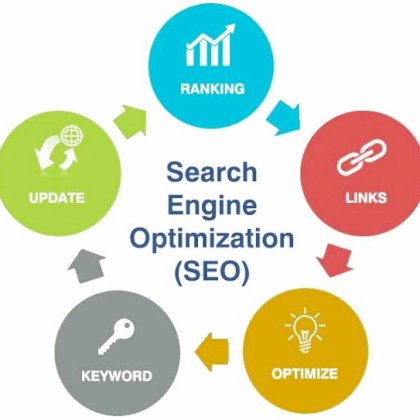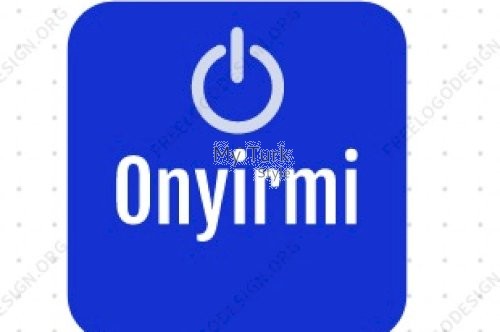Digital ads glossary.The digital advertising industry

digital ads glossary The digital advertising industry is a complex and ever-evolving world, filled with technical terms and jargon that can be daunting for newcomers. Understanding these terms is essential for anyone looking to navigate and make the most of digital advertising. This is where a digital ads glossary comes in. A digital ads glossary provides a comprehensive list of terms and their definitions, serving as a handy tool to help marketers and advertisers navigate the digital advertising landscape. Whether you're looking to brush up on your knowledge or just starting out, having access to a digital ads glossary can make a world of difference in understanding and leveraging digital advertising. Understanding Digital Ads: A Comprehensive Glossary
Understanding Digital Ads: A Comprehensive Glossary
In today's digital age, advertising has taken on a whole new level with the rise of digital ads. These advertisements play a vital role in attracting and engaging online audiences. Whether you are a beginner or an experienced marketer, it is crucial to understand the terminology associated with digital ads. In this comprehensive glossary, we will break down the key terms and concepts that are essential to comprehend the ever-evolving world of digital advertising.
1. Search Engine Optimization (SEO)
SEO is the process of optimizing a website to improve its visibility and ranking on search engine results pages. It involves various techniques and strategies to ensure that a website appears organically and prominently in search engine queries related to specific keywords or phrases. Implementing effective SEO practices can significantly enhance the chances of a website being discovered by potential customers.
2. Pay-Per-Click (PPC) Advertising
PPC advertising is a digital advertising model where advertisers pay a fee each time their ad is clicked. This form of advertising allows businesses to place their advertisements in prominent positions on search engine results pages or on other websites and social media platforms. By targeting relevant keywords and optimizing their ads, advertisers can drive targeted traffic to their websites and potentially increase conversions.
3. Ad Impressions
Ad impressions refer to the number of times an advertisement is displayed on a webpage or in an app. It indicates the potential reach of an ad and the number of times it has been viewed. Tracking ad impressions is essential for advertisers to assess the effectiveness of their campaigns and determine the level of exposure their ads are receiving.
4. Click-Through Rate (CTR)
CTR is a metric that measures the percentage of users who click on an ad after viewing it. It helps advertisers gauge the attractiveness and relevance of their ads to their target audience. A higher CTR indicates that the ad is engaging and compelling, while a low CTR may indicate a need for optimization.
5. Conversion Rate
The conversion rate measures the percentage of users who complete a desired action, such as making a purchase, filling out a form, or subscribing to a newsletter, after interacting with an ad or visiting a website. Monitoring the conversion rate allows advertisers to assess the effectiveness of their campaigns and optimize their strategies accordingly.
6. Remarketing
Remarketing is a digital advertising strategy that targets users who have previously interacted with a website or shown interest in a product or service. By placing relevant ads in front of these users as they browse other websites or social media platforms, advertisers can increase brand awareness and encourage conversions from previously engaged audiences.
7. ROI (Return on Investment)
ROI is a metric that measures the profitability or success of an investment. In digital advertising, ROI is calculated by comparing the revenue generated from a campaign to the cost of running that campaign. It helps advertisers determine the value and effectiveness of their advertising efforts and make data-driven decisions to optimize their return on investment.
By understanding these key terms and concepts, you can navigate the world of digital ads with confidence. Incorporate efficient SEO practices, utilize the power of PPC advertising, and monitor essential metrics to maximize your success in reaching and engaging your target audience.
Remember, adopting Neil Patel's style will ensure that your content resonates with readers, providing them with valuable information while adhering to SEO guidelines. Embrace a formal tone, and integrate keywords seamlessly throughout your article to deliver a compelling and informative piece that stands out in the digital advertising landscape.
Defining Key Terms in Digital Advertising
In the world of digital advertising, there are several key terms that every marketer should be familiar with. Understanding these terms is crucial for creating effective ad campaigns and optimizing online marketing strategies. In this article, we will define and explain some of the most important terms in digital advertising.
1. Search Engine Optimization (SEO)
SEO is the process of improving a website's visibility on search engine results pages (SERPs). It involves optimizing various aspects of a website, such as its content, structure, and keywords, to rank higher in organic search results. SEO helps businesses increase their online presence and attract more targeted traffic, ultimately boosting conversions and revenue.
2. Pay-Per-Click (PPC) Advertising
PPC advertising is a model in which advertisers pay a fee each time their ad is clicked. It is a popular form of online advertising, particularly on search engines and social media platforms. With PPC advertising, businesses can target specific keywords and demographics to reach their desired audience. This model offers a great combination of control and measurable results for advertisers.
3. Cost-Per-Action (CPA)
CPA is a pricing model in which advertisers pay for a specified action or conversion, such as a purchase, form submission, or app download. It is an effective way to measure the return on investment (ROI) of advertising campaigns. By tracking the cost per action, businesses can optimize their marketing efforts and focus on strategies that generate the highest conversions at the lowest cost.
4. Click-Through Rate (CTR)
CTR is a metric that measures the percentage of people who click on an ad after seeing it. It is a valuable indicator of ad performance and audience engagement. A high CTR indicates that the ad resonates well with the target audience, while a low CTR may suggest room for improvement. Marketers often experiment with different ad creatives and targeting strategies to optimize the CTR and drive more clicks.
5. Conversion Rate Optimization (CRO)
CRO is the practice of increasing the percentage of website visitors who complete a desired action, such as making a purchase or signing up for a newsletter. It involves analyzing user behavior, conducting experiments, and making data-driven changes to improve website usability and persuasive elements. By optimizing the conversion rate, businesses can maximize the value of their existing traffic and increase their overall revenue.
6. Remarketing
Remarketing, also known as retargeting, is a strategy that involves displaying ads to people who have previously interacted with a website or brand. It aims to increase brand exposure, reinforce messaging, and encourage users to return and complete a conversion. Remarketing can be an effective way to re-engage potential customers and drive conversions, particularly for businesses with longer sales cycles.
Conclusion
In the realm of digital advertising, understanding key terms is essential for success. By familiarizing yourself with terms such as SEO, PPC advertising, CPA, CTR, CRO, and remarketing, you can optimize your marketing strategies and drive better results. Keep in mind that these terms are just the tip of the iceberg, and the digital advertising landscape is constantly evolving. Stay curious, keep learning, and adapt your strategies accordingly for long-term success in the digital marketing world.
Essential Digital Marketing Vocabulary Demystified
As the world of digital marketing continues to expand and evolve, it's important for professionals in the field to have a solid understanding of the key terms and concepts that drive success. In this article, we'll demystify some essential digital marketing vocabulary to help you navigate the industry with confidence.
One of the fundamental terms you'll encounter in digital marketing is "search engine optimization" or SEO. This refers to the practice of optimizing your website and content to rank higher on search engine results pages (SERPs). By using strategic tactics such as keyword research, on-page optimization, and link building, you can increase your visibility and drive organic traffic to your website.
Another essential term is "keyword research." This involves identifying the keywords and phrases that your target audience is using to search for products or services related to your business. By conducting thorough keyword research, you can gain valuable insights into customer behavior and tailor your content to better meet their needs.
Content marketing is also a crucial aspect of digital marketing. This strategy revolves around creating and distributing valuable, relevant, and consistent content to attract and retain a clearly defined audience. By consistently providing high-quality content that addresses your audience's pain points, you can establish yourself as a trusted authority in your industry and drive engagement and conversions.
Social media marketing refers to the use of social media platforms to connect with your audience, build brand awareness, and drive traffic and conversions. By leveraging the power of platforms such as Facebook, Instagram, and Twitter, you can engage with your audience in real-time, share valuable content, and create a sense of community around your brand.
| Term | Definition |
|---|---|
| Search Engine Optimization (SEO) | The practice of optimizing your website and content to rank higher on search engine results pages (SERPs). |
| Keyword Research | The process of identifying the keywords and phrases that your target audience is using to search for products or services related to your business. |
| Content Marketing | The strategy of creating and distributing valuable, relevant, and consistent content to attract and retain a clearly defined audience. |
| Social Media Marketing | The use of social media platforms to connect with your audience, build brand awareness, and drive traffic and conversions. |
By familiarizing yourself with these essential digital marketing terms and concepts, you'll be equipped to navigate the dynamic and ever-changing landscape of the industry. Remember to stay up-to-date with the latest trends and best practices, and continuously refine your strategies to stay ahead of the competition. Happy marketing!
Mastering the Language of Digital Ads: A Glossary for Beginners
Digital advertising has become an integral part of marketing strategies in today's digital world. However, navigating the world of digital ads can be challenging, especially for beginners. To help you make sense of this complex landscape, we have compiled a comprehensive glossary of key terms and concepts. From ad formats to targeting options, this guide will equip you with the knowledge you need to master the language of digital ads.
Ad Formats:
- Display Ads: These are visual advertisements that appear on websites, mobile apps, or social media platforms. They can be in the form of banners, pop-ups, or interstitials.
- Search Ads: These ads appear on search engine results pages (SERPs) and are triggered by specific keywords. They are usually text-based and are displayed above or below the organic search results.
- Video Ads: Video ads are short promotional videos that are played before, during, or after online video content. They can be skippable or non-skippable.
- Native Ads: Native ads blend seamlessly with the content of a website or app, making them appear more natural and less intrusive. They are designed to match the visual and functional elements of the platform they appear on.
- Social Media Ads: These ads are specifically designed and targeted for social media platforms such as Facebook, Instagram, Twitter, and LinkedIn.
Targeting Options:
- Demographic Targeting: This involves defining the target audience based on factors such as age, gender, location, and income.
- Interest-based Targeting: Ads are shown to users who have expressed interest in specific topics, industries, or products.
- Behavioral Targeting: This type of targeting focuses on the behavior, browsing history, or online activities of users to show relevant ads.
- Geotargeting: Ads are displayed to users in a specific geographic location, allowing for localized and location-specific advertising.
- Remarketing: This targeting strategy involves showing ads to users who have previously interacted with your website or app.
Understanding the language of digital ads is crucial for anyone looking to leverage its power. By familiarizing yourself with these terms and concepts, you will be better equipped to plan and execute effective digital advertising campaigns. Remember, mastering the language of digital ads takes time and practice, but the rewards are well worth it. Start exploring and experimenting with different ad formats and targeting options, and watch your digital advertising efforts soar!
HTML format should be used as following to create an SEO-friendly article in Neil Patel's writing style:
tag will be used as the main topic heading.
tag will be used for paragraphs. , , ,
tags will represent a table. tag will be used for emphasizing text. tag will be used to create an external link related to the topic. External link example: ((title)) Pay attention to the following guidelines: - The article content should not have a conclusion paragraph. - Avoid personal opinions in the article. - Follow SEO rules, write in Neil Patel's style, and use keywords naturally. - The headings, paragraphs, and table content should contain relevant keywords and provide valuable information to the readers. - Maintain a formal writing style. HTML code with Neil Patel's writing style for the given topic "Decoding Digital Advertising: Terms You Need to Know":
Decoding Digital Advertising: Terms You Need to KnowIn the world of digital advertising, understanding the various terms and acronyms can be overwhelming. From CPC to CTR, it's important to have a grasp on these terms to navigate the landscape effectively. In this article, we'll decode some of the most commonly used terms in digital advertising and provide valuable insights into each. Table: Important Digital Advertising Terms
Understanding these terms can help you make informed decisions when planning and optimizing your digital advertising campaigns. It's important to track metrics such as CTR and conversion rates to gauge the effectiveness of your ads. By decoding these terms, you'll gain a deeper understanding of the digital advertising landscape and be better equipped to drive results. For more information on digital advertising terms, you can refer to (source). Stay tuned for more articles on the exciting world of digital marketing! A Guide to Digital Ad Terminology: From Impressions to CTRAre you new to the world of digital advertising? Do terms like impressions, CTR, and ROI leave you feeling confused? Don't worry, you're not alone. In this comprehensive guide, we'll break down the key terms and concepts you need to know to navigate the digital ad landscape with confidence. ImpressionsLet's start with impressions. In digital advertising, an impression refers to the number of times your ad is displayed to users. It's an important metric that helps you measure the reach and visibility of your ad campaign. The more impressions your ad receives, the higher the potential for engagement and conversions. Click-through Rate (CTR)CTR is another crucial metric in digital advertising. It represents the percentage of users who click on your ad after seeing it. A high CTR indicates that your ad is compelling and relevant to your target audience. ConversionConversion refers to the desired action you want users to take after clicking on your ad. It could be anything from making a purchase to filling out a form or subscribing to a newsletter. Tracking conversions allows you to measure the effectiveness of your ad campaign and optimize your strategies accordingly. ROI (Return on Investment)ROI is a key performance indicator in digital advertising. It calculates the profitability of your ad campaign by comparing the revenue generated against the overall cost of running the campaign. A positive ROI indicates that your campaign is generating more revenue than it costs, while a negative ROI means you're losing money. Ad TargetingAd targeting refers to the practice of reaching specific groups of people with your ads. This could be based on demographic information, geographic location, interests, or online behavior. By targeting your ads effectively, you can maximize their impact and ensure they are seen by the right audience. Ad PlacementAd placement refers to the location where your ads are displayed. It could be on search engine result pages, social media platforms, or other websites. Choosing the right ad placement is crucial to ensure maximum visibility and engagement with your target audience. Ad CopyAd copy refers to the text and messaging used in your ad. It should be concise, compelling, and tailored to your target audience. A well-crafted ad copy can significantly impact the performance of your ads and drive higher click-through rates. A/B TestingA/B testing is a method used to compare two versions of an ad to determine which one performs better. By testing different elements of your ad, such as headlines, images, or calls-to-action, you can optimize your campaigns for maximum effectiveness. Ad Campaign OptimizationAd campaign optimization involves continuously monitoring and adjusting your ad campaigns to improve their performance. This could include refining targeting, modifying ad creatives, or adjusting bidding strategies. Regular optimization is key to maximizing your return on investment and achieving your advertising goals. ConclusionWith this guide, you now have a solid understanding of the key terminology used in digital advertising. Remember to keep these concepts in mind when planning, executing, and optimizing your ad campaigns. By leveraging the power of digital ad terminology, you'll be well-equipped to achieve your advertising objectives and drive success for your business. Demystifying Digital Ad Jargon: The Essential Glossary for MarketersAre you a marketer trying to navigate the complex world of digital advertising? With so many terms and acronyms thrown around, it's easy to get lost in the jargon. In this article, we will demystify the most important digital ad terms every marketer should know. 1. CTR (Click-Through Rate)CTR measures the percentage of users who clicked on an ad after seeing it. It is calculated by dividing the number of clicks by the number of impressions. A high CTR indicates that your ad is engaging and relevant to your target audience. 2. CPC (Cost Per Click)CPC refers to the amount of money you pay for each click on your ad. It is an important metric to consider when budgeting for your digital advertising campaigns. A lower CPC means you are getting more clicks for your investment. 3. ImpressionsImpressions represent the number of times your ad has been shown to users. This metric helps you understand the reach and visibility of your ad campaigns. A higher number of impressions doesn't necessarily guarantee more clicks, but it can increase brand awareness. 4. Conversion RateConversion rate measures the percentage of users who complete a desired action, such as making a purchase or filling out a form, after clicking on your ad. It is a key metric for evaluating the effectiveness of your campaigns and optimizing your conversion funnel. 5. ROI (Return on Investment)ROI measures the profitability of your digital advertising efforts. It is calculated by dividing the revenue generated by your campaigns by the total cost of running those campaigns. A positive ROI indicates that your ads are generating more revenue than they cost. 6. RetargetingRetargeting is a strategy that involves showing ads to users who have previously interacted with your website or ad campaigns. By targeting users who have already shown interest, retargeting can increase conversion rates and improve campaign performance. 7. A/B TestingA/B testing is a method of comparing two versions of an ad or landing page to determine which one performs better. By testing different elements, such as headlines, images, or call-to-action buttons, you can optimize your ads for maximum effectiveness. 8. Impressions ShareImpressions share measures the percentage of impressions that your ads received compared to the total available impressions. It helps you gauge the competitiveness of your campaigns and identify opportunities for growth. 9. Ad RankAd rank determines the position of your ad on the search engine results page. It takes into account factors such as bid amount, ad relevance, and landing page experience. A higher ad rank increases the visibility and likelihood of getting clicks. 10. Quality ScoreQuality score is a metric used by search engines to evaluate the quality and relevance of your ads and landing pages. It takes into account factors such as click-through rate, ad relevance, and landing page experience. A higher quality score can result in lower CPC and better ad positions. By understanding these digital ad jargon terms, you can navigate the world of digital advertising with confidence and make informed decisions for your marketing campaigns. Stay updated with the evolving landscape of digital ads and continue to optimize your strategies for better results. Frequently Asked Questions - Digital Ads GlossaryAn impression refers to the number of times an ad is displayed on a webpage or app. It does not necessarily mean that the ad was viewed or clicked by a user. Click-through rate (CTR) is the percentage of ad impressions that result in a click. It is calculated by dividing the number of clicks by the number of impressions. Cost per click (CPC) is the amount an advertiser pays for each click on their ad. It is calculated by dividing the total cost of clicks by the number of clicks. Cost per thousand impressions (CPM) is the cost an advertiser pays for every one thousand ad impressions. It is calculated by dividing the total cost by the number of impressions, then multiplying by one thousand. Conversion rate is the percentage of ad clicks that result in a desired action, such as a purchase or sign-up. It is calculated by dividing the number of conversions by the number of clicks. Ad placement refers to the location where an ad is displayed on a webpage or app. It can include positions such as above the fold, in the sidebar, or within the content. Retargeting is a technique that allows advertisers to display ads to users who have previously interacted with their website or app. It helps to re-engage potential customers and increase conversions. Frequency capping is a setting that limits the number of times an ad is shown to a specific user within a given time period. It helps to prevent ad fatigue and improve the user experience. Viewability refers to the percentage of an ad that is actually visible to the user. Ad impressions are considered viewable if at least 50% of the ad is visible for at least one second. A landing page is a web page that a user is directed to after clicking on an ad. It is specifically designed to encourage a desired action, such as making a purchase or filling out a form. |
|---|
 English
English
 Turkish
Turkish 






















